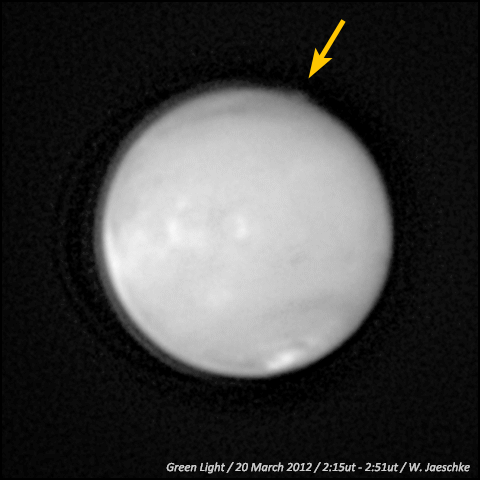TORONTO – Though we continue to gain a better understanding of our solar system, it is once again showing us that there are a lot of mysteries out there for us to figure out.

In March and April 2012, amateur astronomers reported plume-like features on Mars. The plumes were seen on both occasions in the same region and reached altitudes of more than 250 km.
But scientists don’t have an explanation as to what caused them
READ MORE: Reality Check: Is settling on Mars in the next 10 years a possibility?
A new paper published in the journal Nature reported on the results of a study on the plumes.
“At about 250 km, the division between the atmosphere and outer space is very thin, so the reported plumes are extremely unexpected,” said Agustin Sanchez-Lavega of the Universidad del País Vasco in Spain, lead author of the paper.
Making the puzzle even more interesting is that these mysterious plumes developed in less than 10 hours and remained visible for more than 10 days.
In order to determine whether or not this was the first time they had appeared, the researchers went back to Hubble archives and amazingly found another instance of a plume-like structure imaged by the space telescope in 1997.

So what are some of the possible explanations?
Well, it’s not aliens.
The researchers suggested that it could be a cloud of water ice, something that is highly reflective. But that would mean that our understanding of the Martian atmospheric circulation is incorrect.
Another theory is that it could be related to aurora (what we call the Northern lights here in Canada). Other planets, such as Saturn, also have aurora activity caused by the sun’s particles interacting with their magnetic field. Mars doesn’t have much of a magnetic field, though it’s stronger in some locations.
In the meantime, scientists will continue to monitor the red planet for any more occurrences of the mysterious structure.
But, hey, maybe the Mars One settlers can take a look at the mysterious plume when they get there.



Comments